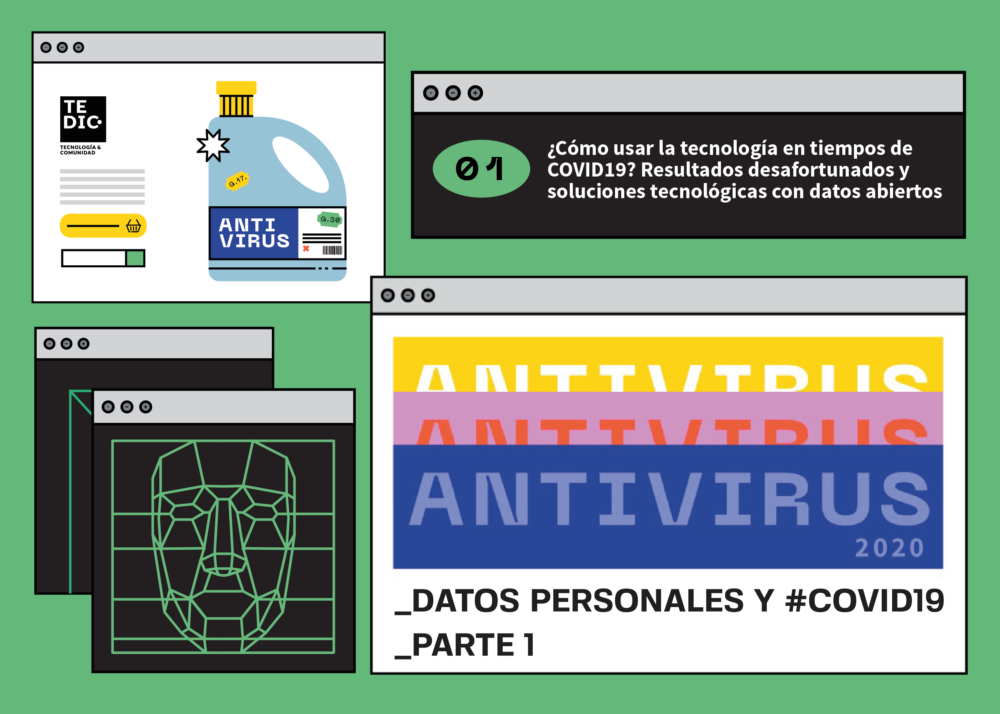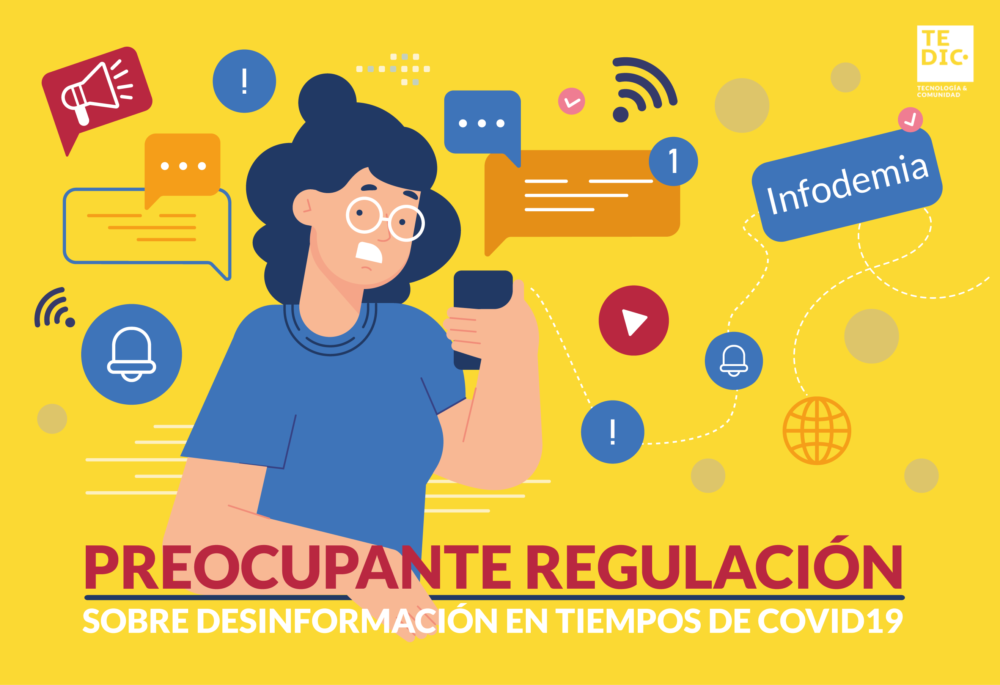
We are facing an extreme situation, never experienced by our generation, and the answers are coming from social mobilization and, mainly, from each government. In the era of information technology, its use is undeniably a part of the responses to this pandemic. However, neither in Paraguay nor in the region do we have the regulatory maturity to regulate the technology industry, which makes it a risky ally. Even if it shows the best intentions, it is still a problem.
In Paraguay, we have been facing this pandemic with measures similar to the region and the world, such as isolation and the improvement of the health system. However, many of the arguments that are discussed are not directly related to the pandemic but rather to short-term actions, which aim at keeping a good image or having a clear conscience. For example, the reduction in the salaries of the directors and advisers of the Itaipu hydroelectric dam for three months1. What should be done instead, according to economic experts such as Verónica Serafini and others worldwide, is a readjustment of the whole economy and in particular improving resources for the health and emergency systems, making a tax redistribution, through taxing personal income, tobacco, alcohol, soy, etc.
The main difference between an epidemic and a pandemic is how we respond to it: while isolation, surveillance and control can be used in the face of an epidemic, the response to a pandemic must focus on a systemic solution that improves the public health infrastructure. The massive number of deaths in countries such as Italy, Spain, Iran or the US demonstrate this need to invest in the public and emergency health systems. It is very likely that digital tools and powers will end up accompanying the changes that this pandemic will generate at the level of markets, borders and geopolitics.
In our country, many proposals and ideas are emerging, based on technologies, on how to confront COVID19, some of them focused on biomedical and social control. These solutions are collecting a significant amount of sensitive information, such as health diagnoses, geolocation, historical commercial surveillance, etc. Therefore, it will be key to evaluate how technological solutions impact democracy, in an emergency context such as the one we are going through.
Unfortunate results
When civic technology and open data are produced without a comprehensive look and without proper maintenance, we can expect unfortunate results.
What’s important is to recognize in advance when a technological solution can be a benefit or a problem in a context like ours. In cases where public health systems are more robust and there are public policies for universal health coverage, such as in Hong Kong2 or South Korea3, experiences with the use of technological applications have been positive, both in testing and in giving early warnings, as well as in the areas of research and surveillance. In our country, however, the situation is quite different.
The applications of technology in our country tend to have greater risks, because there are no rigorous investigations of context, there is no knowledge development and we have weak institutions, to which the lack of a comprehensive approach to technological solutions is added. All this produces low quality results with a lack of guarantees in the protection of fundamental human rights. For example, some cases and proposals seem to evidence the belief that putting together a doctor (of any specialty) and a group of computer scientists can help improve the health system.
It would be ideal for other kinds of knowledge and other profiles to be included in this type of proposal, such as health doctors with an emphasis on epidemiology, economists, statesmen, specialists in information cataloging, lawyers specialized in human rights, UX designers specialized on protection of personal data, cybersecurity engineers, etc. On the other hand, ventures such as the one in the example should be articulated with public health policies, should incorporate an institutional and financing perspective in the medium and long term, and should articulate governance among the various sectors involved.
Another problem is the speed with which these “technological solutions” emerge and are incorporated, which causes enormous difficulty in determining whether or not they solve the problem presented. Even when most of these solutions implement sophisticated technologies such as artificial intelligence, machine learning, etc., their impact is believed to be minimal compared to their risk. The solutions that will work will be the least sophisticated, such as those used for communication, awareness, training and education. Some examples that show results are telemedicine transmissions, biomedical responses or even the questioned surveillance of people (social and political control).
In the face of this emergency, some open data technological solutions that already existed4 were temporarily suspended, either due to the extreme situation or due to institutional precariousness. This precariousness is observed in structural problems such as the lack of human resources, the lack of technological infrastructure (computers, Internet connection, digital literacy), among others. An example of this is the Akuerapp platform, which offered information on the availability of medicines and health services throughout the country. This platform is outdated and not used, as reported by David Riveros, executive director of reAcción, in an interesting article where he explains the problems around this application5. He also enumerates the problems arising from its abandonment, which end up impacting on the lack of transparency in the access to public information on strategic health supplies at a national level, in the context of COVID19.
This same problem is seen in government open data platforms, such as open data repositories developed with the free software CKAN6: no political interest has been observed on the part of the authorities responsible for keeping the platform updated7.
Due to the lack of public policies to sustain these technological solutions over time when emergencies arise, improvised solutions continue to come out with very high social and economic costs. Therefore, any technological solution that does not contemplate its maintenance commitment over time, will not be a solution, but rather a burden: “short-term gain, long term pain”.
Technological solutions that work in an emergency context
The objective is not to avoid the use of technology, but to build on what we already know and think about solutions for the local context in current conditions. In order to respond to a type of emergency such as COVID19, which implies an increased demand on the health system, technologies that work in limited circumstances, based on specific evidence and that are professional, must be implemented.
To apply a technology for collecting personal data information using web solutions or mobile applications, it is necessary to understand the social, economic, political and technological infrastructure context. Currently, Internet access in Paraguay is as follows: out of the total population, the degree of penetration8 of mobile connection is 53.70%, while landline connection is 4.8%. According to the 2017 ECLAC report9, Internet penetration has increased in all countries and quintiles between 2011 and 2015. However, Paraguay has shown that Internet access continues to be highly unequal among the richest households and the poorest: the access rate is 20 times higher in the richest quintile compared to the poorest quintile. Furthermore, the connection gap between urban and rural areas is 20 percentage points.
Internet penetration has to do also with the quality of the service received by low-income people who access the Internet: a large part of the Paraguayan population has a smartphone but can only access social networks or messaging applications that providers offer free of charge (with zero rating10), such as WhatsApp. This means that the access is way more limited when talking about platforms like the COVID’s self-report platform, surveillance of self-reported symptom trackers, and others. Therefore, they end up having little impact in dealing with this type of emergency.
CONTINUING WITH THE REFLECTIONS ON STATE TRANSPARENCY AND SOCIAL CONTROL, IN THE SECOND ARTICLE («EMERGENCIES SHOULD NOT BE A BLANK CHECK») I DEVELOP MY POINT OF VIEW ON PRIVACY, GEOLOCATION AND SOCIAL CONTROL.
Notas:
- These people earn 106 million guaraníes monthly (about 16,000 USD). Related news: https://www.lanacion.com.py/politica/2020/03/31/itaipu-se-une-a-la-causa-y-recortara-salarios/
- Available at: https://www.cnbc.com/2020/03/18/hong-kong-uses-electronic-wristbands-to-enforce-coronavirus-quarantine.html
- Available at: https://qz.com/1810651/south-koreans-are-using-smartphone-apps-to-avoid-coronavirus/
- Implemented within the framework of the rules on access to public information.
- Available at: https://medium.com/reaccionpy/el-ministerio-de-salud-tiene-una-heráculo-que-no-aprovecha-6231b03a051e
- Free software for managing open data sets: http://ckan.org
- Available at: https://www.datos.gov.py
- We understand by degree of penetration, the percentage of people who have access within a country. In this case, it is calculated over the total of 7 million people and the data correspond to 2018. CONATEL states that these data have not had a great variation.
- CEPAL Report 2017: https://repositorio.cepal.org/bitstream/handle/11362/43365/S1800083_es.pdf
- Zero rating, a way to Internet precarization: https://www.tedic.org/zero-rating-es-una-forma-de-precarizar-internet/


 Worrisome regulation on disinformation in times of COVID19
Worrisome regulation on disinformation in times of COVID19